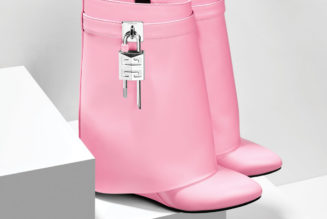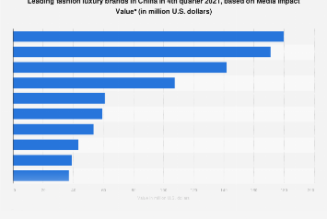
You’ve probably seen students at USC rock designer brands like Louis Vuitton and Chanel, among others. It’s no secret that these companies overcharge for their products, which raises the question: “Why would anybody pay such an exorbitant price for something that’s not worth it?”
The answer is Karl Marx’s commodity fetishization. Commodity fetishization, in short, relates to the hierarchical valuation society puts on commodities that might not be worth the price. We believe that the pricier, the better. We place value on the final product — the commodity — rather than the labor and process of making it. This can lead to both environmental and social consequences.
Daily headlines, sent straight to your inbox.
Subscribe to our newsletter to keep up with the latest at and around USC.
My favorite example of luxury commodity fetishization is Golden Goose shoes. For those of you who might not be familiar with the brand, they sell shoes ranging from $300 to $600. However, there’s one caveat: They come torn and dirtied!
The fact that people are willing to buy expensive new shoes that look old highlights that business conglomerates capitalize on commodity fetishization. This creates a shopping culture that estranges us by exploiting the unseen labor process.
According to Ian and Mark Hudson’s research paper, “REMOVING THE VEIL? Commodity Fetishism, Fair Trade, and the Environment,” because workers have no direct relationship with the consumer, “consumers give little thought to the manner in which the items they consume are produced.”
As consumers, we prioritize the perceived value of these luxury goods rather than its inherent value. Consumers can be counted on to buy luxury goods at unforeseen prices which, in turn, perpetuates a vicious cycle of blind consumption.
This cycle helps glorify commodity fetishization and creates unrealistic expectations. First, it enables a hierarchy of wealth as these luxury items signal socioeconomic status and encourage materialism. Second, it creates a subliminal association between high quality, high prices and equitable work environments.
This concept can feed into the delusion that high prices mean that everything is better, which is not true. High-end brands have the capacity to pay their workers liveable wages, especially considering their high-profit margins. However, brands such as Dior and Yves Saint Laurent still exploit labor in developing countries and violate human rights.
Working conditions are unsafe and include long hours, not to mention, the workers have no employment benefits. For example, Dior exploits Indian embroiderers. An article by The New York Times reports, “They sewed without health benefits in a multiroom factory with caged windows and no emergency exit, where they earned a few dollars a day completing subcontracted orders for international designers. When night fell, some slept on the floor.”
According to Good On You, a source for ethical fashion, Dior received a score of 21-30% (aka “Not Good Enough”) on their Fashion Transparency Index. Moreover, LVMH Moët Hennessy – Louis Vuitton, which owns Dior, scored well below benchmark — scoring 19 out of 100 “when it comes to addressing the worst forms of exploitation in their supply chains” — according to a KnowTheChain report.
Commodity fetishization is hard to break, and the lack of transparency from these brands furthers this. According to the Hudsons’ research paper, our society has been led to be “more interested in how their purchases improve their own well-being than any considerations about the social and environmental conditions under which the product was produced.”
I’m not saying never buy designer goods, but I think as consumers, we need to be more conscientious of our purchases. Commodity fetishization contributes to unethical labor practices and unfair price gaps in the marketplace. To combat this, we should consider the production process and be aware of the hidden relationships between us and the workers.









